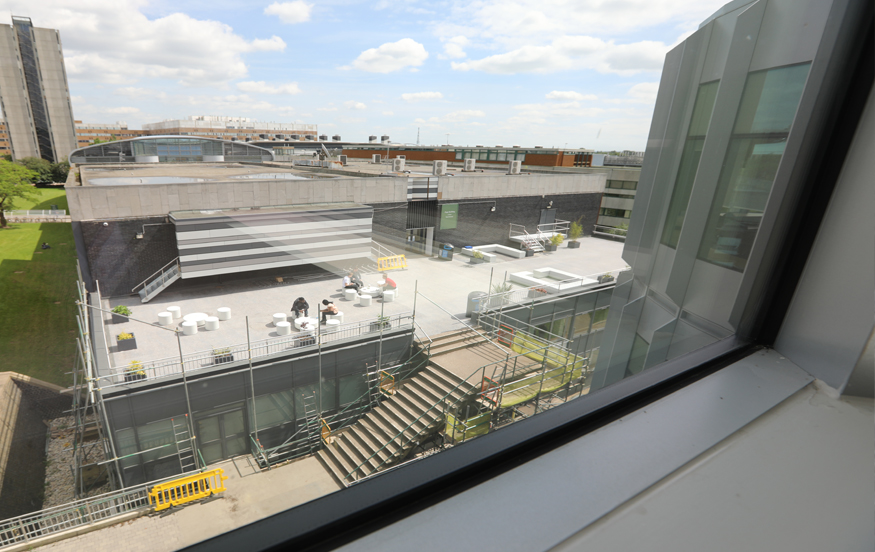More and more architects are recognising the versatility, durability and sustainability benefits of mastic asphalt. One of the most well established waterproofing membrane systems currently available, mastic asphalt is an ideal building material for a whole range of construction applications, both new build and refurbishment projects, where a smooth, seamless, durable surface is required.
Traditionally consisting of graded limestone aggregate bound together with bitumen, today’s mastic asphalt systems are now manufactured using advanced polymer modified formulations to ensure all the performance characteristics of traditional asphalt systems, with many added benefits. It offers total waterproofing for roofing and car park decking and acts as a tough working surface in flooring and paving. Mastic asphalt can even be used as part of mastic asphalt terrazzo (MAT) flooring, whereby different grades and choices of coloured aggregate can be added at the mixing point.
The Building Research Establishment (BRE) has officially stated that asphalt roofing is capable of lasting 50-60 years, but MAC has many examples well in excess of this. Mastic asphalt was first laid at London’s St Paul’s Cathedral in 1906 and it provided well over 100 years’ of effective waterproofing before needing replacement.
Green Credentials
Many specifiers will be familiar with the fact that mastic asphalt is tough and long-lasting, but what is perhaps less well known is that it is one of the most sustainable and greenest building materials currently available, helping specifiers to achieve the highest BREEAM rating possible as mastic asphalt can be integral in any building design where an A+ rating is required.
Architects are specifying mastic asphalt for a wide range of green roof applications – from schools to hospitals, office buildings to apartment blocks. Whether intensive or extensive, biodiverse or brown, it is critical that green roofs are built on a solid waterproofing foundation. A green roof system laid with a mastic asphalt waterproofing system enhances the environment, controls storm water run-off and reduces noise and heat transmissions by upgrading the acoustic and thermal performance of a roof. When mastic asphalt is used for a green roof system, it eliminates the need for root barriers.
Mastic asphalt is also carbon neutral – a massive bonus for any building owner anxious to show their green credentials and, when it has reached the end of its useful life, it can be recycled or used as roof screed. Ten years ago the mastic asphalt sector became the first industry in the world to achieve the CarbonZero standard.
Highest Fire Rating
The high mineral content of mastic asphalt renders it virtually incombustible. Mastic asphalt fulfils all the external fire resistance required for a roof covering and achieves the highest rating (AA) when tested in accordance with BS 476: Part 3. It has also been tested in accordance with draft European standards prEN1187-1 and prEN1187-2. No significant spread of flame was observed and no flame penetration occurred.
As mastic asphalt is laid in molten form, it is often confused with other types of waterproofing membrane that require naked flame or torch on application. In reality, there is no naked flame at the point of installation and because mastic asphalt is so highly flame resistant, there is little or no potential of fire risk.
This article featured in the online May issue of Architecture magazine – click here to take a look.

